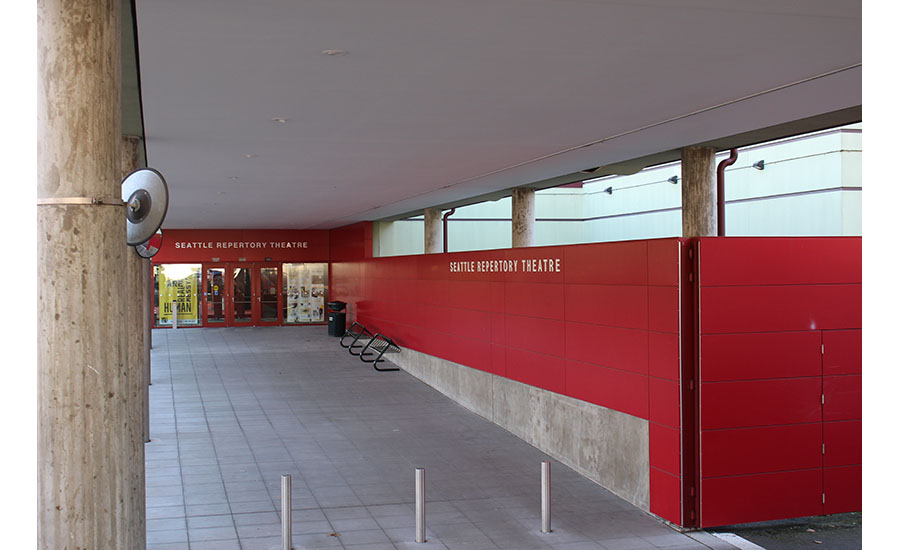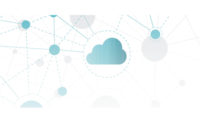The Access Control Cloud: Security Integrators Share Their top Benefits
What they see as the greatest benefits, what their experiences have been, how they started, and their advice for selling managed access control.

When Guardian Security was faced with a small customer (Seattle Repertory Theatre) whose budget didn’t allow for what they needed, they made their first foray into hosted access control. Without any training or background in this type of system, they installed it as a beta trial and discovered an untapped market. Photo courtesy of Guardian Security Systems
Frank Close began his foray into managed access control when he “failed” in being able to deliver what a client needed. “We sold a security system for three doors with keypads, based on what the customer told us they could afford. We were trying to design it for that amount and I met with them, but we realized it just didn’t make any sense. At the time we had just had a sales call with Brivo and I said to the client, ‘If money was no object, would this solution work?’”
Without any training or background in this type of system, Close, who is CEO of Guardian Security Systems Inc., Seattle, and his team took the leap and installed it for this customer as a beta trial, and the rest is history. “Our failure taught us that there was a huge customer need out there,” he says.
In the earliest days of managed access control, companies like the pioneer of managed access control, Kastle Systems, Falls Church, Va. (SDM’s 2015 Systems Integrator of the Year), had to literally design everything from scratch. But today there are multiple providers such as Feenics, Brivo, ISONAS, BluBØX, and more, that make entry into this market much easier for the security integrator, as well as more traditional manufacturers such as Honeywell, AMAG, Genetec and others coming on board with offerings of their own. And that is a good thing, because customers are increasingly demanding it.
More than that, security integrators are increasingly looking for offerings that bring in RMR, and hosted and managed access is one of the easiest ways to get that at the moment — particularly for those not interested in the traditional intrusion/monitoring model, says Colin DePree, sales manager and employee owner, Pro-Tec Design, Minnetonka, Minn. His company just launched a hosted access platform in June 2017.
“In part it was due to the desire to get into the RMR business, while not having an intrusion alarm background and not wanting to get into it,” he says. “We became an ESOP company in February 2016. As an employee-owned company we have to grow and drive value to our organization. One of the biggest things that was missing when we did our self-assessment was the RMR component.”
DePree found hosted access very accessible, particularly now that there are several companies that offer it. “It wasn’t a large financial investment, outside of the time and energy of the employees…. For my CEO and our board of directors it was much more about needing to find RMR sources and finding ways to drive it. So it was, ‘Go do it, prove it can be done and we can expand from there.’”
Many of those that have started feel it is a matter of survival. “It seems as though the industry is becoming more commoditized,” says Jay Slaughterbeck, managing partner, Strategic Security Solutions, Raleigh, N.C. “We have distributors trying to sell direct and customers trying to install their own things. It could be said that if the integrator doesn’t begin selling and supporting more services they will be left behind.”
Mike Traniello, vice president of sales and marketing, Technical Systems Group Inc., Rochester, N.Y., agrees. “People are using the Internet all the time, and more and more customers are becoming self-reliant and leaning less on us for our technological knowledge and resources. That is impacting our margins on installation. RMR is a way to keep our margins up and produce consistent revenue, while better servicing the customer.”
For security integrators who do already have an RMR model, expanding to managed and hosted access is a logical step, and managed access particularly is less daunting for them, says Craig Leyers, senior vice president sales and marketing, ADS Security, Nashville, Tenn. Almost half of his company’s access control business today is managed access.
“We manage it all within our monitoring center,” he says. “Having a UL-listed 5 Diamond rated monitoring center positions us well to offer round-the-clock response.”
This is something any integrator looking to get into this should keep in mind up front, Close adds. “This is a whole culture change. These are not less demanding customers because it is managed access. They still want things fixed at 2 a.m. It is going to be a long road, but those that take that path will be quite successful.”
For those considering hosted or managed access, or even on the fence about it, SDM spoke with several security integrators — whose experiences range from having offered managed access for years, to developing their own managed offering, to starting slowly with a hosted offering that is done for them — to find out the top five reasons hosted and managed access is good for business.
RMR
The top reason to consider getting into managed or hosted access control is, of course, the RMR that it brings. While many integrators report that these solutions are still a very small portion of their total offerings, they are happy with the results so far.
“We didn’t have any RMR from access control before,” DePree says. “For us, the results are absolutely meeting our goal. We weren’t sure what our target was. But as soon as we realized what the potential was we were hitting our goal and beyond because we were able to land a couple of larger opportunities that immediately showed the impact. It is hard to quantify … but because we didn’t have anything beforehand we are up 1,000 percent. We started with zero and now we have an RMR stream.”
Jim Pinto, principal, Key Security Designs Corp., Oakland, Calif., says his company offers 90 percent to 95 percent cloud-based products. “We really only carry three products and two of them are pure cloud.... On a typical sale we get about 15 percent for the licensing for the SaaS and another 10 percent through service agreements, so 25 percent of the overall sale is RMR.”
Shawn Sharp, managing member, Kingdom Security LLC, Houston, Texas, chose to take a traditional access control system from RS2 and move it to the cloud. “Our RMR has grown significantly. We didn’t do a lot of intrusion or even site support agreements before and we had less than $2,000 a month in RMR. Now we are at $18,000 a month.”
Integrators who care at all about getting RMR have little to lose, says Gunvir Baveja, CEO, eVigilant Security, Lorton, Va. “You will constantly get revenue and you will get it over a period of time. If your business model is quick money now and you are not worried about the long-term then maybe this isn’t for you. But if you want to build a stronger, more sustainable business where the value goes up you should definitely look at this.”
Predictability of Income
One of the biggest business benefits to hosted and managed access solutions is being able to plan your budget and resources more reliably, Pinto says. “You know how much you have coming in with RMR so you can better budget your personnel when things get tough.”
Beyond that, having the constant source of income helps integrators take advantage of other financial resources from organizations that use RMR as a basis for valuation.
“When you have a constant source of income you can leverage that to get more lines of credit,” Baveja says. “It gives you more flexibility and the valuation of your company goes up as your RMR goes up.”
Cyber Security
Many security integrators feel that cloud solutions are more cyber secure than on-premise products. “If you have a solution sitting on a network that has access to the Internet, or another solution that was designed with cyber security in mind, you are benefitting your customers by offering them something that was designed with that in mind,” Slaughterbeck believes.
This opinion is often shared by IT managers as well, Pinto adds. “They get the cloud. They feel it is more secure than a server in an electric room because it has security compliance built in.”
Cyber security was one of the deciding factors for Traniello at Technical Systems Group. “We saw the security of this being a big thing. As we went to approach the customer we had to be able to convince them that that security was not only there but potentially better than on-site…. It is a matter of cyber security but also of redundancy. The level of redundancy you can create in hosted is more cost-effective than trying to create that in a traditional client-server situation.”
Efficiency
Hosted or managed solutions are not only easier to install, they are simpler to maintain and update as well. In fact, that is one reason Sharp decided to convert a traditional system to a cloud-based one. “We were trying to become more efficient on our installs. We were losing time on jobs initially setting up software, getting IT involved, getting servers on their domain, etc. That was why I started looking at this, to get a lot off the table when doing these installs.”
Kevin Smith, managing partner, Nighthawk Group LLC, Elgin, Ill., felt similarly when setting up his offering, which is 100 percent hosted under the ISONAS platform. “The biggest advantage for me is we don’t have to deal with hardware and network issues and interacting with third parties. We don’t do IT services, but we might have to get involved with troubleshooting PCs with these third parties; then we would have to convince the IT provider it is their problem to fix. That was time on our part that we never got reimbursed for.”
What’s more, cloud solutions allow for almost instantaneous software updates to be pushed down to everyone, which saves time and hassle.
“It’s just a better way to handle your client,” Pinto says. “With these cloud-type solutions you have all the tools you need to take care of most service issues. It’s a win-win. The client gets better service and there is less equipment required on the client’s site.”
Stickier Clients
If RMR is the holy grail that got integrators to consider hosted and managed access, by far the biggest benefit after doing it was finding that clients stayed longer. “It’s sticky,” says Jennifer Graham, vice president of marketing for Kastle Systems. “Customers don’t just rip out access control systems. Once they are in place, they tend to keep them. This gives integrators the opportunity to expand their offerings by providing them with a platform to add on other services/sensors.”
Unlike on-premises systems, hosted and managed access control is harder to jump to another provider. “Before, we might have a one- or two-door installation, then forget about them,” Sharp says. “But now because they keep going to Kingdom Cloud, they keep coming back. It makes them stickier and they remember who you are. Customers who wouldn’t normally call back, we see their activity and can troubleshoot them.”
It’s not just for small customers, either. “We still serve the exact same markets, primarily industrial and chemical plants,” Sharp adds. “All we are doing is changing the solution we are providing. Others sell a system and walk away. We are part of your organization.”
Looking for a reprint of this article?
From high-res PDFs to custom plaques, order your copy today!






